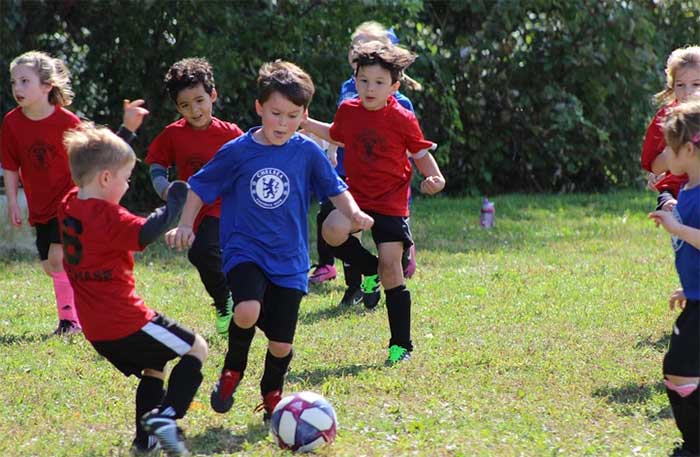A study conducted by the University of Queensland (UQ) has found that children who regularly play sports have better mental health.
Children Should Participate in More Team Sports
Associate Professor Dr. Asad Khan from UQ’s School of Health and Rehabilitation Sciences led the research team, analyzing data from over 4,200 children in Australia over an 8-year period.
They examined the benefits of team sports such as football, cricket, netball, as well as individual sports like karate, tennis, and gymnastics. The results were published in the Journal of Adolescent Health (JAH), the official publication of the Society for Adolescent Health and Medicine.

Team sports are beneficial for children’s development – (Image: STEVE JONES).
“The research team found that regardless of the sport, there is a positive impact on mental health. However, for children participating in team sports, the benefits are even greater.This may stem from the opportunity to form friendships and collaborate toward a common goal through playing team sports.” Dr. Asad Khan stated.
According to the Australian Institute of Health and Welfare, approximately 14% of children aged 4 to 11 in the country experience mental health disorders, with boys being more affected than girls.
However, Associate Professor Asad Khan pointed out that playing team sports can significantly improve the situation for introverted children who find it challenging to communicate with their peers.
Girls Need to Engage in More Sports
Additionally, girls are encouraged to be more active, as the participation rate of females in team sports remains quite low compared to males.
“At ages 6 and 7, about 59% of boys participate in team sports, while girls only account for 26%. Boys who engage in team sports face fewer psychosocial difficulties and have better health-related quality of life.” Dr. Asad Khan mentioned.
He also pointed out that some reasons for the lower participation rates of girls in team sports include a lack of confidence. Furthermore, many stereotypes persist, suggesting that team sports are activities only for boys.
Moreover, the lack of diversity in sports taught in schools also contributes to lower participation rates among females.


















































